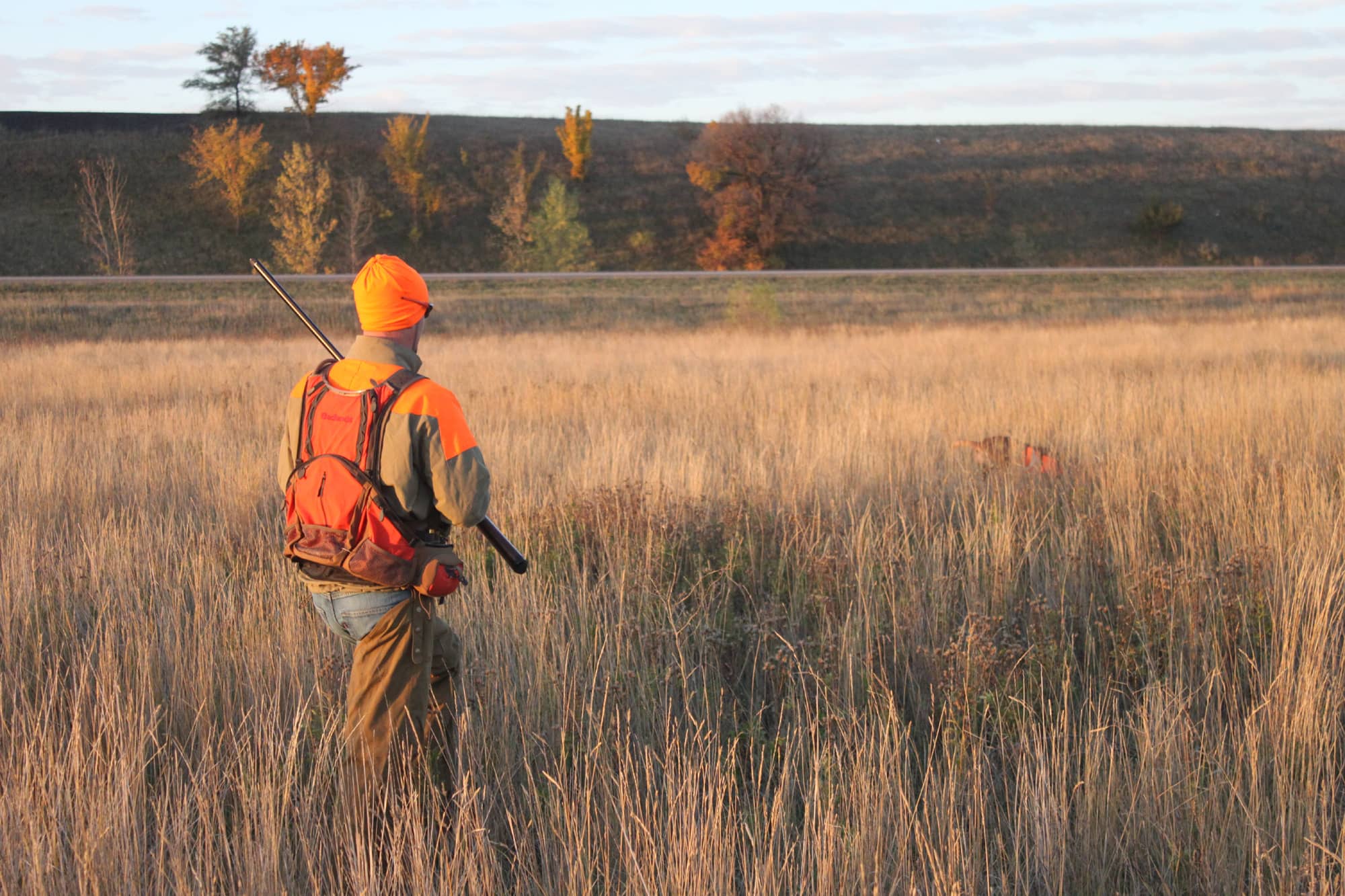
Make the Turn. Hunters know habitat holds birds, and areas conserved benefit all wild creatures. The first step to more and better conservation comes with experience in the field linking encounters with wildlife with the places they need to survive and thrive. Simonson Photo.
By Nick Simonson
Grass equals birds. Habitat equals deer. Clean water equals fish. These are the things I along with many other hunters and anglers have come to know in the outdoors.
I can recall once cutting from corner to corner on a dirt field to grab the pickup truck and collect my dog and hunting buddy who were finishing off a walk, and there in the middle of nothing but black dust and wheat stubble a covey of partridge flushed, surprising me straight out of my early autumn evening thoughts with enough shock to shoulder my shotgun instinctively. Other than that, the barren ground has provided nothing else for me in my adventures when it comes to flushing birds or bounding bucks.
For those who hunt and fish, we know the connection between conservation of those marginal spaces and their major impacts on where small game, big game and favorite fish species reside. Cruise along any protected and undeveloped shoreline in the summer, and you’re likely to see bluegills teeming in the shallow weeds, and that occasional bruiser largemouth tucked under the branches of an overhanging willow tree on those lake edges where the blades of development haven’t touched the shore, and no docks break up the natural boundary between land and water.
Whether it’s natural prairie or that which has been replanted, so too with each step in that area comes the opportunity to be startled by the wings of a brightly colored rooster pheasant in fall, or the heart-pounding rise and run of a whitetail deer at close range. Like the study of math, the equation in the outdoors becomes a bit clearer over time that wildlife species are a function of their available habitat. The more grass, the more upland birds we have; in both lean times when cold winters and wet springs hamper reproduction, and in those good years where rain falls softly, and mild summers spur the appearance of large broods along the roadside in August. With habitat, the bottom of a population cycle isn’t as bad and quick rebounds are possible among those species dependent on grass to beget the next generation. Without habitat however, we as hunters find ourselves taking on the mantra of a bridesmaid ball club, adopting the hopeless motto of “maybe next year.”
In society’s model of doing great things every 20 years or so, forgetting all about them, re-learning them, and implementing them once again, we’re somewhat stuck in the trough of remembering what it was that made hunting so good two decades ago. In that same autumn back when I cut across the dirt field in September to the startling flush of those Huns (which were likely there due to the CRP surrounding the harvested acres on four sides), I was surprised even more on a November hunt for deer. In winds that would have canceled any other trip afield, in the spirit of the waning season I urgently walked the edge of a public access parcel as the northwest gusts roared through the leafless trees and bent the tall golden stems of dense planted prairie grass, that even when arched in the gales, still came up to my armpits.
As I made my way into the twenty-acre sea of swishing stalks, I caught sight of dark eyes watching me at the far end, tucked into the angle created by the belt of trees. Another pair appeared, and then another and another, all framed by turning ears and nervous noses checking the air. My form was mostly concealed by the screen of vegetation, rendering me unidentifiable. The noise of my movement was muted by the rushing wind through the grass. My scent was carried miles away in a matter of moments. One by one, nearly two dozen heads rose up in the corner of the thick prairie habitat, and I stood there in amazement for what seemed like an eternity before the first deer snorted and turned, starting a stampede through the northern stand of trees. If there was ever an instant where the connection between places for our big game to live were tied with magical hunting moments, that was the one for me.
While such spaces may not be as prevalent on the landscape as they once were, they still exist and still provide the lesson which connects habitat to wildlife, and in turn, those instances in the outdoors which keep us coming back. Share a walk this autumn with someone new, or perhaps an old hunting friend who has been away awhile and talk about the “good old days” when these moments and others may have been more commonplace. Through that nostalgia comes learning (or re-learning), through that learning comes experience, and through experience comes advocacy to help society make the turn upward once again in that cycle of doing, forgetting, remembering, and re-doing. The impact of adding one voice with the knowledge of what’s important, when done by many, can begin to turn the tide in a single season, and bring about the conservation improvements and solutions which can once again usher in a new era of seemingly endless habitat and boundless opportunities…in our outdoors.
